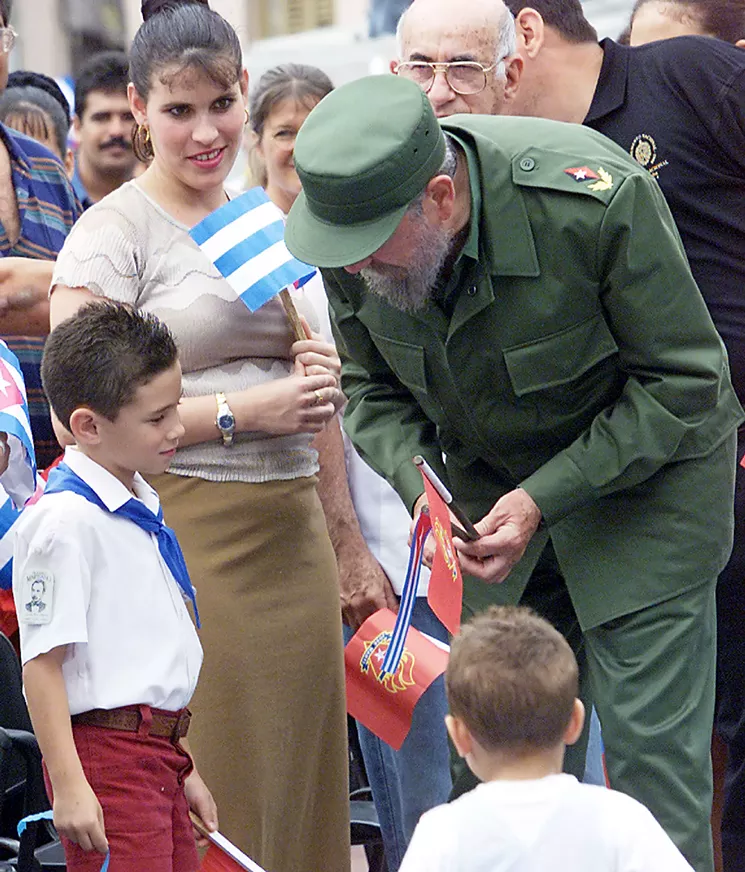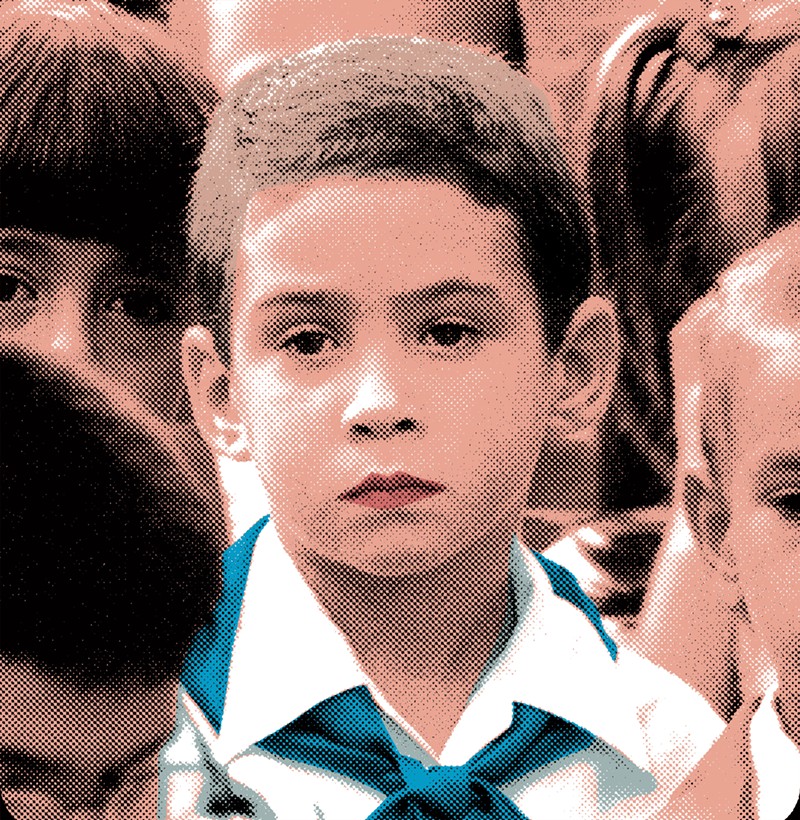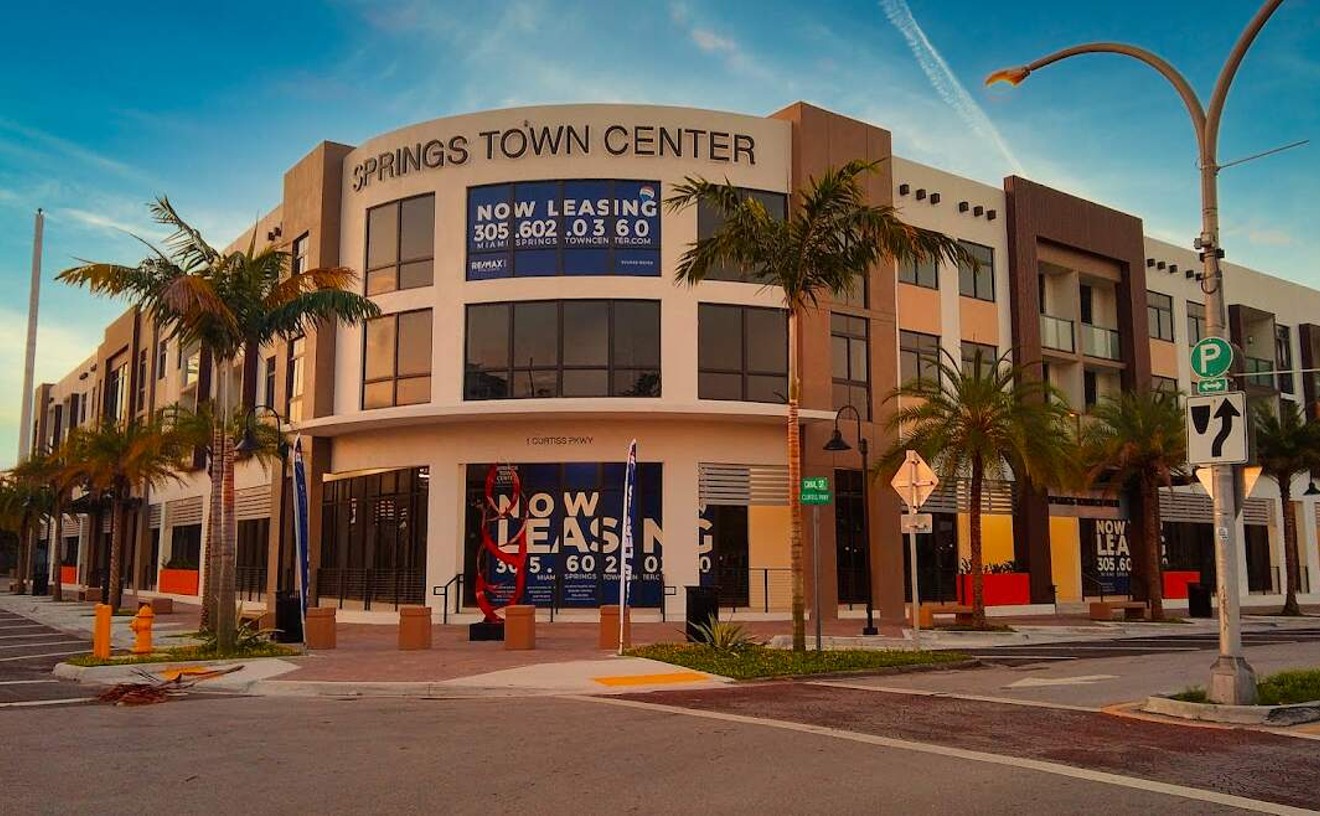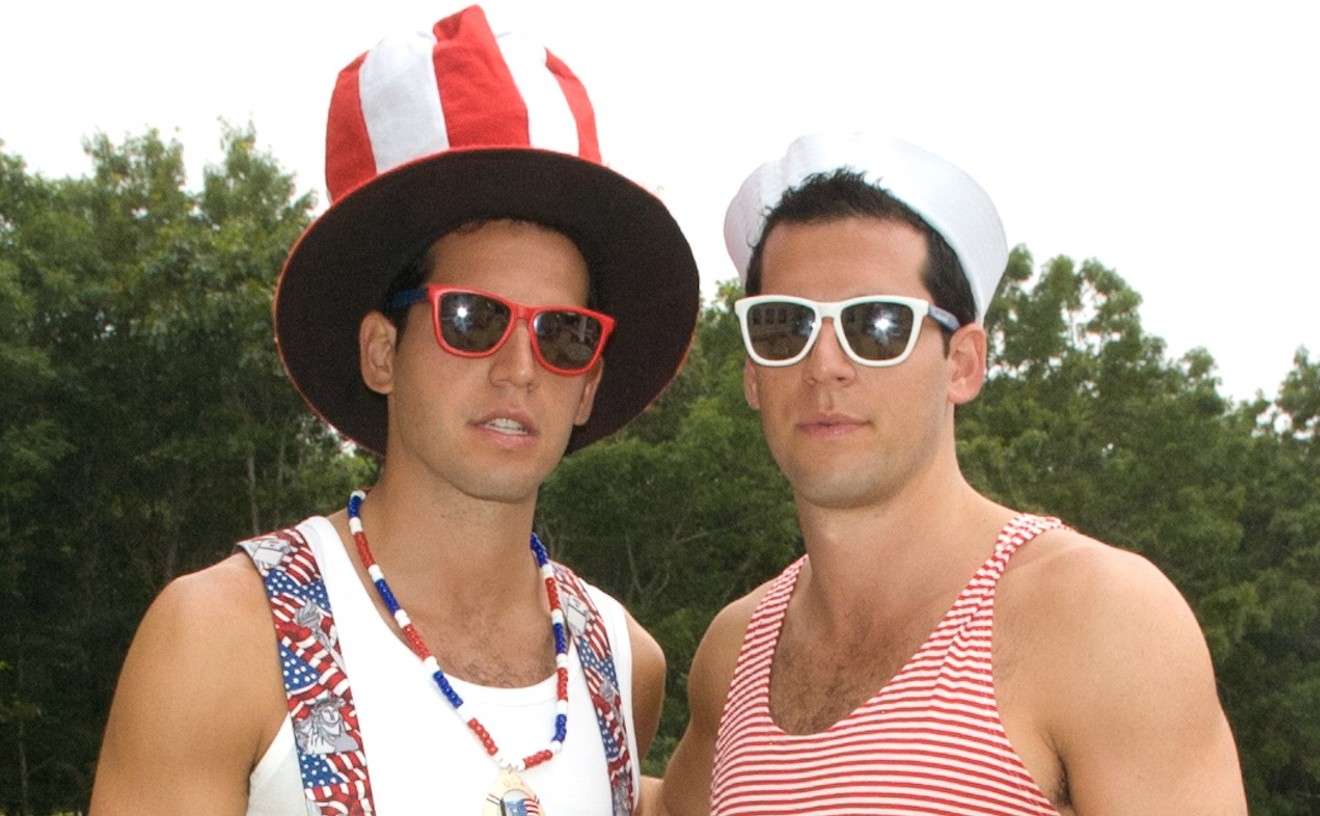I was 20 years old on Thanksgiving Day 1999 when little Elián González, surrounded by dolphins, was found drifting off the Fort Lauderdale coast.
The name "Elián González" may ring a bell for some Americans. But for Cuban-Americans and American-born Cubans like me, "Elián" is more than a memory. It's an indelible moment in our recent history.
Elián had escaped Cuba on a makeshift raft with his mother and 13 other refugees. Only three survived the journey: 5-year-old Elián, 22-year-old Arianne Horta, and 33-year-old Nivaldo Fernández-Ferra. Elián's mother, swallowed by the sea, died during the crossing. Toward the end, Elián found himself alone, adrift and dehydrated. He would later say dolphins helped him survive by keeping his inner tube from sinking.
When two fishermen — Donato Dalrymple and his cousin Sam Ciancio — found Elián, they saw a pod of dolphins nearby.
The cousins weren't supposed to have been fishing that day — there was an advisory for small boats like theirs — but they went anyway because they wanted to spend time together. When Dalrymple spotted the dolphins and the raft, he insisted they get closer. He thought he saw something inside. Ciancio thought it was a "cruel joke," a doll someone had attached to a raft. But it was a boy. "I believe it was my destiny... [that we] ran right into that inner tube," Dalrymple would tell reporters years later.
It was the stuff of myth.
Many thought it was a miracle. But Elián would become a nightmare for others, in particular the United States government and its Immigration and Naturalization Service (INS), which had to figure out what to do with the boy, as well as for members of the Cuban-American community, who tried to explain why, in their eyes, he needed to stay on U.S. soil. Instead of being heard, the community fell from grace. From one day to the next, in the eyes of the general public, Cuban-Americans went from "hard-working immigrants" who exemplified the American dream to screaming fools.
It could have been simpler. Yet, considering the thicket of deception and political chess, it could not have been.
Presumably, the so-called wet foot, dry foot policy in place at the time, which held that any Cuban who touched dry land could seek asylum, allowed Elián to stay with his relatives in Miami and grow up Cuban-American. In fact, about a week after the boy was brought ashore, U.S. Border Patrol Deputy Chief Mike Sheehy said Elián and the two other survivors "would be offered the opportunity to reside here in the United States. There is no provision to remove Cuban nationals to Cuba."
But things took a turn when Elián's father, Juan Miguel González, who was divorced from Elián's mother and still lived in Cuba, began to demand that his son be sent back to the island. Fidel Castro expected the same. (In fact, the two men's voices were difficult to distinguish one from the other.)
"Can you explain these crazy Cubans to me? Isn't it obvious the boy should go back to his father?"
tweet this
By the end of the year, an all-out battle had erupted between what the media had begun to call the "Miami relatives" who took the boy in (his uncle Lázaro González and cousins), the Cuban government, and the U.S. government. That conflict would grow to include the voices of the Cuban-American community and the American public at large.
When I returned to college in New York after winter break in January 2000, I went to an office hour with my favorite professor. She turned to me at the end of our time and said, "Vanessa, you're smart and Cuban. Can you explain these crazy Cubans to me? I mean, isn't it obvious the boy should go back to his father?"
She was, of course, referring to members of the Cuban-American community represented on TV, who were protesting in the streets and outside Lázaro González's house, where they cried out for the boy to be allowed to stay in the States.
But "crazy Cubans" pierced me like a myopic dagger. How could I begin to answer what she had phrased so condescendingly? For the first time in my life, I felt like a persona non grata in my own country.
I told her it was very complicated and tried to change the subject.
I think that now, on the 20th anniversary of "Elián," I can look back and give a better answer.
I write from Miami today, in quarantine, hostage to the pandemic of COVID-19, thinking about the boy and about the long arms of that moment in history.
Twenty years on, with a PhD in hand and a lifetime of Cuba inside, I believe the answer can be found by laying out alongside the Elián story the history that was never laid out as context for the Elián story.
The great gulf between the perspectives of Cuban-Americans and Americans 20 years ago consisted of what the former knew well and the latter knew hardly at all: life on the island from which Elián had washed ashore. The broader American lens did not widen enough to truly take in the Cuban-American view, undervaluing the weight of lived yet unwritten history it carried — because if there is one thing communism knows how to do well, it's how to rewrite, erase, and appropriate history. Che Guevara himself said, "Ni un paso atrás, ni para coger impulso": Not one step back, not even to gain momentum. But what is history for if not to look back upon and learn from?
Embed from Getty ImagesTo understand Elián and 1999, you must at least understand 1989 and 1994.
"In the '90s, there were blackouts that lasted 16 hours in Cuba," says Didier Santos, a Cuban filmmaker who was living on the island at the time. Santos produced the music festival Rotilla, which was eventually shut down and then re-appropriated by the Cuban government. "When the Elián story broke, it was a very tough time. It was chaotic — people were killing each other for bikes, hunting cats for food. That's real," he says.
Santos is referring to what Castro called the "Special Period," the era that followed the fall of the Soviet Union, which left Cubans adrift on an ocean of hunger and desperation owing to the severing of Soviet subsidies. What ensued is not only what most people call "an economic crisis" but also a cry for freedom. The distinction is important.
This is the Cuba into which Elián was born in 1993.
Georgina Cid, Elián's great-aunt in Cuba, told the Miami Herald in November 1999 that Elián's mother had "wanted everything a mother could want for her son. She dedicated herself to him." For her, that meant leaving Cuba.
In her book The Collapse: The Accidental Opening of the Berlin Wall, historian Mary Elise Sarotte writes that "people living under dictators have essentially three choices: to remain loyal, to find some means of exit, or to voice their discontent." Sarotte was referring to East Berlin, which in 1989 voiced its definitive discontent when its people took to the streets and tore down the Berlin Wall.
By 1994, Cubans had tried it all. That August, Cubans took to the streets in what became known as the Maleconazo, named for the Malecón, the seawall that surrounds Havana, which protesters ran toward while shouting, ¡Libertad! ¡Libertad! ¡Libertad! and ¡Cuba, sí! ¡Castro, no!
Some of them hit dry land raving mad after having witnessed family members eaten alive by sharks.
tweet this
The Maleconazo ended when Fidel Castro himself took to the street to meet his people. Dutch photographer Karel Poort reported for the BBC that when Castro arrived, the chants changed so that he heard, "Esta calle es de Fidel": This street belongs to Fidel. Granma, Cuba's state newspaper, reported the event as "another great battle won by Fidel and the people against those who, egged on by the United States, violently disturbed the peace on Havana's Malecón."
When protest failed, Cubans tried escape. That didn't always work either.
A month before the Maleconazo, the Cuban government sank the tugboat 13 de Marzo, killing 37 of the adults and children aboard who were attempting to leave the island. As Didier Santos puts it: "If Fidel cared so much about Elián and 'his children,' then why did he drown them on the 13 de Marzo?"
María Victoria García Suárez, who was on the boat, later recalled, "After nearly an hour of battling in the open sea, [one of the boats that came after us] circled 'round the survivors, creating a whirlpool so we would drown. Many disappeared into the seas... We asked them to save us, but they just laughed."
García lived to tell her story. Her brother, her husband, her 10-year-old son, and other family members who were onboard perished.
To this day, I'm often asked why people in Cuba don't revolt against the dictatorship if it's so bad. The fact is, they have, and they do.
The problem is that under dictatorships, truths are hidden from global view.
Only last year, human-rights activist José Daniel Ferrer was captured, imprisoned, brutally beaten, and tortured for peacefully speaking out against the regime. (Thanks to activism and social-media campaigns undertaken by organizations such as Cuba Decide and Amnesty International, Ferrer was recently released after six months in prison and sentenced to four and a half years of house arrest.)
Knowing what Sarotte knew — that once discontent sets in, the people will revolt again — Castro decided in 1994 to let the dissidents "find some means of exit." In effect, he declared that anyone who wasn't happy in Cuba could leave without fear of punishment. That is to say, he wouldn't drown them like he had the tugboat or make their lives miserable at home if they were found at sea and returned to Cuba. He had done this once before, during the Mariel Boatlift in 1980. He knew getting rid of protesters bought him time.
Cubans, prisoners in their own country, took the announcement as a clarion call.
In August 1994, 35,000 people set off to sea. They had dismantled their homes for lumber, scrounged inner tubes, and scraped together anything else to build makeshift rafts, which they used to throw themselves into the mouth of the ocean in search of the thing for which they'd been chanting: freedom.
And so "the rafter crisis" commenced.
Janet Reno, the U.S. attorney general at the time, put it this way: "To divert the Cuban people from seeking democratic change, the government of Cuba has resorted to an unconscionable tactic of letting people risk their lives by leaving in flimsy vessels through the treacherous waters of the Florida Straits."
In Miami, at the other end of Castro's escape valve, we saw one Cuban rafter another land on our shores. Ribs out for the counting, lips blistered from the sun, encrusted with the salt and brine that had burnt them as they crossed, eyes bloodshot. Some of them hit dry land raving mad after having witnessed family members eaten alive by sharks.
Santos recalls "an avalanche of rafters that didn't stop until 2014," when President Barack Obama launched an effort to reestablish diplomatic relations with the island — an aperture that has since closed in on itself.

This history fueled by the thirst for freedom is only a portion of what Elián González carried with him when he arrived in Miami in 1999. But no one attached that history to the depictions of the "hysterical" Cubans who called for the child to stay in Miami. The lens pointed at them simply said, "crazy." And this altered the story and its core truths.
Fabiola Santiago, a Cuban-American columnist for the Miami Herald who was writing features in 1999, says she found herself checking her own paper for accuracy because reporters were getting facts wrong.
Embed from Getty ImagesSantiago describes the paper at the time as "a microcosm of what was happening outside. The Herald had a very bad habit that, when there was a big story, their star Anglo would be assigned — because you can't trust a roomful of Cubans to tell that story correctly," she adds sarcastically. "This copyeditor who sat catty-corner from me, I heard him on the phone to his partner, screaming, 'I'm tired of the fucking Cubans! I just want the fucking Cubans to just fucking go home!'"
In other words, the story of Elián is not only about who was speaking out and when, but also about who was silenced, both on and off the island, and why.
"The story was always reported with a slant against Cuban-Americans, so it was misunderstood by everyone north of the Miami-Dade County line," says Lourdes Tester, a legal aide at the law firm Colson Hicks Eidson and the wife of Hank Tester, a TV journalist who covered the Elián story.
"Nobody cried for Elián in Cuba... In Cuba, that's the way things work."
tweet this
Joe Garcia, former executive director of the Cuban American National Foundation, says the organization conducted a poll after the Elián debacle that revealed the consequences of that Anglo view of the Cuban community.
"First off, it unleashed the hatred [against Cuban-Americans]," Garcia says. "Elián broke us." From then on, he says, Cuban-Americans were no longer "the fair-haired children of the Cold War."
Exactly as Castro had intended, his escape valve put pressure on the other side of the Florida Straits. The dictator seized the moment to construct the Tribuna Antiimperialista (Anti-Imperialist Platform), an immense and costly plaza designed to hold rallies for upward of 100,000 people, which he situated directly in front of the U.S. Interests Section.
Santos says Cuban citizens were compelled to participate in the propaganda events. "You had to do political activities to graduate. At work or at school, you had to do this, or you paid the price," he explains. "It was superficial. Nobody cried for Elián in Cuba. Nobody got into a discussion about it. In Cuba, that's the way things work."
But seen from America, the assembled masses had the effect Castro desired. Liberals shunned Cuban-Americans rather than the dictatorship they had fled, while the political right shoveled more fuel into the nativist furnace, rendering the once-golden Cuban immigrant just another lump of coal.
Those untethered to Cuba's history saw only a father who sought to be reunited with his son — Juan Miguel calling for his baby. Why couldn't these Cubans just give the kid back?
The day-to-day reality of the American middle and upper classes that were commenting daily on the Elián case was very different from Cuban reality.
Mostly, it was about self-actualization. After a boom in the 1970s, for example, the U.S. divorce rate continued to drop slowly through the 1990s, but there were 4.1 divorces for every 1,000 Americans in 1999 (down from a high of 5.2 in 1980). That's a lot of child-custody battles. Americans knew what those felt like, and they made a correlation to the familiar.
But Elián wasn't that. On the island, Cubans were still dealing with levels one and two of Maslow's hierarchy of needs — the basics: water, food, warmth, rest. Those were difficult to find in general. Safety and security, second on the pyramid, were out of the question; Cubans who desired to speak their minds lived — and still live — in fear of being captured, tortured, and silenced.
For them, "custody" embodied an entirely different meaning.
Janet Reno believed that Juan Miguel "loved Elián and honestly wanted to take him back to Cuba" and that immigration laws "clearly call[ed] for a child to be placed in the care of a parent, in preference to a more distant relative, while the child's immigration status [was] being resolved."
Outwardly, that view seems reasonable. But today, would we send a child who had made it across the ocean from Syria back to that bombed-out shell of a country simply because the kid had a parent there and an uncle here? Not likely. Thanks to films and photos, we've seen what's happening there. Cuba's reality was — and still is — harder to access.
"Elián" is neither a custody case nor the saga of a child separated from his father.
tweet this
As the Elián story dragged on, those who were allowed inside his circle were able to glimpse that reality. One such person was the late Roman Catholic Sister Jeanne O'Laughlin, whom Reno appointed to mediate when Elián's two grandmothers were dispatched to the United States in January 2000 to argue on behalf of Juan Miguel that Elián should be sent back.
Reno was sure O'Laughlin would remain neutral, but she did not. "I expected to witness a meaningful visit. But I had no idea that what I saw would be so powerful that it would change my mind, persuading me that Elián should not be returned — at least for now — to his father in Cuba," O'Laughlin wrote in a February 2000 New York Times op-ed.
O'Laughlin believed the grandmothers were not acting out of their own "free will." She also discovered that one of them wanted to defect. "This talk of defecting got me to thinking; if one of the adults wanted out, perhaps it was not a good place for the child," she subsequently elaborated to the Miami Herald.
The Elián drama came to a head at 5:15 a.m. April 22, 2000, when, on Reno's orders, federal agents forcibly entered the house where the boy was living. The raid was code-named "Operation Reunion."
Embed from Getty ImagesThe image captured by photographer Alan Diaz traveled around the world and remains seared into the memories of many: a federal agent pointing an MP5 submachine gun at Elián — whose face was frozen in an expression of sheer terror — and the fisherman who had rescued him as the two cowered in a closet. (Diaz, who died in 2018, was freelancing for the Associated Press when he snapped the picture; two months after the raid, the wire service hired him as a staff photographer.)
The agents wrapped the boy in a blanket and whisked him away. At Andrews Air Force Base in Maryland, he was reunited with his father.
In his 2004 book, Last Dance in Havana, Pulitzer Prize-winning Washington Post columnist Eugene Robinson writes that Elián was treated like a "rock star" upon his arrival home and that "Fidel so doted on Elián when the boy first returned that Cubans joked he had finally found his successor."
Castro, who had "summoned throngs into the streets to demand Elián's return" while Elián was on U.S. soil, even built a museum in the boy's hometown of Cárdenas, on the island's northern coast. (When Robinson traveled to Cárdenas to try to interview Elián's father, a police officer and a local party official stationed outside Juan Miguel's door politely turned him away.) By 2016, when he was 21 years old, Elián referred to Fidel as his "father."
Other facts have emerged in the intervening years as well.
In 2002, an internal memo written by INS attorney Rebeca Sánchez-Roig came to light, revealing that some INS officials believed Elián's father had applied for an immigrant visa at the U.S. Interests Section in Havana through the annual lottery. The memo also pointed to suspicions that Juan Miguel was being "coerced by the Castro regime."
A handwritten notation Sánchez-Roig added on a printout of the memo indicated that then-INS Commissioner Doris Meissner had ordered the memo destroyed the very next day and decreed that no further discussions related to the Elián case be put in writing.
Embed from Getty ImagesTwo years earlier, Juan Miguel's cousin María Isabel Martell, who had fled Cuba to the States, had told the Associated Press: "I know for a fact that Juan Miguel wanted to come to the United States. Juan Miguel told me, in front of his mother and his relatives, that sometime in the future he would come, even if he had to come in a tub."
Thus refocused, "Elián" is neither a custody case nor the saga of a child separated from his father. It's the chronicle of a political chess match, populated with the full complement of power brokers and pawns.
And Alan Diaz's photo is precisely the image the victorious Castro would have handpicked to capture the endgame.
This past winter, I visited the Stasi Museum in Berlin, which exhibits the notoriously effective and ruthless Cold War-era methods that the Stasi, the East German secret police, used on its people. Secret police archives, now made public, reveal that the Stasi trained the Cuban government — and that in Cuba, the Cold War has survived into the 21st Century.
Cubans and Cuban-Americans are still fighting a Cold War against a Stasi-trained dictatorship, and its effects are etched inside all of us, alongside the image of a 6-year-old boy's face paralyzed in horror.
Fortunately, I am allowed to dig up all of this information. Fortunately, I live in a country where we're allowed to open the vaults of history and shed light — to answer questions we might have been unable to answer before, to speak freely, to share points of view that others might not have grasped in the past.
For that, I am grateful that my parents fled Cuba so I could write this from a place of freedom — the very thing Elián's mother died for and failed to achieve for her son.
Vanessa Garcia is a Cuban-American native of Miami. A writer and multidisciplinary artist, she is the author of the novel White Light, which won first prize in the 2016 International Latino Book Awards.











